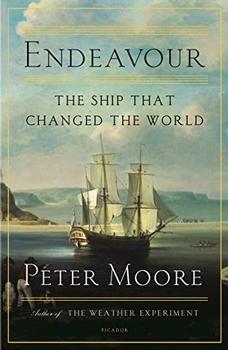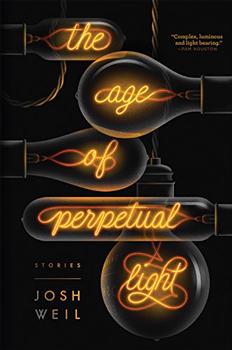Summary | Excerpt | Reviews | Beyond the book | Read-Alikes | Genres & Themes | Author Bio

How the Romantic Generation Discovered the Beauty and Terror of Science
by Richard HolmesA guide to the sublime new physical and intellectual universe inhabited by Wordsworth, Coleridge, Keats, Shelley, Mary Shelley, and Byron; a survey of the scientific discoveries that underpin contemporary perceptions and investigations of the natural world; and a history of the ideas that still inform our sense of what it means to be a poet or a scientist, The Age of Wonder is stirring reading for anyone interested in the lives of extraordinary, world-altering people. Holmes builds his lucid and beautiful history around Joseph Banks, Tahitian adventurer and patron of scientific exploration and experimentation through his leadership of the Royal Society; William Herschel, visionary constructor of telescopes and discoverer of the planet Uranus; his sister, Caroline, astronomer in her own right and discoverer of many comets; Mungo Park, African explorer; and Humphry Davy, chemist, experimenter and inventor.
Holmes begins when, as personified by Joseph Banks’s botanical, cultural and sexual exploration of Tahiti, science meant personal and literal exploration. He concludes his narrative when science has become a profession and the word "scientist" has been coined. In between are daring expeditions to Africa, balloon ascents (and descents), the intuition of deep space (and deep time necessary for evolution); speculation about life on other planets; the exploration of gases, experiments with electricity and the search for the animating power of life itself. Holmes knows that behind each of these discoveries and inquiries is a fascinating and often heroic personality:
I believe science needs to be presented and explored in a new way. We need not only a new history of science, but a more enlarged and imaginative biographical writing about individual scientists... We need to understand how science is actually made; how scientists themselves think and feel and speculate. We need to explore what makes scientists creative, as well as poets or painters, or musicians...
And Holmes is an intrepid and artful explorer of what makes these scientists create. After reading The Age of Wonder, I challenge you to forget comet-chaser Caroline Herschel’s brave and lonely telescopic "sweeps" of the heavens, or Dr. Alexander Charles’s first ascent in a "true" hydrogen ballon above the Tuileries Gardens in 1783:
"Nothing will ever quite equal that moment of total hilarity that filled my whole body at the moment of take-off. I felt we were flying away from Earth and all its troubles for ever. It was not mere delight. It was a sort of physical ecstasy. My companion Monsieur Robert murmured to me - I’m finished with the Earth..."
What unites Holmes’s discoverers, despite their varying temperaments, is a similar ecstasy. With Humphry Davy it is the physical ecstasy produced by nitrous oxide as he experiments upon himself; for Mungo Park it is the ecstasy of the unknown as he pushes into the interior of Africa; for Mary Shelley it is the horrific ecstasy of Dr. Frankenstein as he creates life itself.
I am especially grateful that, in addition to humanizing scientific discovery, Holmes, a poet, demonstrates the scientific clarity and precision of Romantic poetic imagery and ideas. He notes Coleridge’s lifelong interest in science and scientists, Mary Shelley’s knowledge of gruesome experiments with dead animals and human bodies "reanimated" by electric currents, and Keats’s familiarity with astronomy:
The young John Keats remembered an organised game at his school in Enfield, in which all the boys whirled round the playground in a huge choreographed dance, trying to imitate the entire solar system, including all the known moons (to which Herschel had by then added considerably). ...Keats did not recall the exact details, but one may imagine seven senior boy-planets running round the central sun, while themselves being circled by smaller sprinting moons... and the whole frequently disrupted by rebel comets and meteors flying across their orbits. Keats was later awarded Bonnycastle’s Introduction to Astronomy as a senior school prize in 1811. Reading of Herschel, he enshrined the discovery of Uranus five years later in his great sonnet of 1816, "On First Looking into Chapman’s Homer" ["...Yet did I never breathe its pure serene/Till I heard Chapman speak out loud and bold:/Then felt I like some watcher of the skies/When a new planet swims into his ken..."].
Learning how and when great poets and great scientists met one another, read each other’s work, and absorbed each other’s speculations and discoveries makes reading The Age of Wonder an especially ecstatic adventure. From every angle, this is a wonderful book.
![]() This review was originally published in The BookBrowse Review in September 2009, and has been updated for the
April 2010 edition.
Click here to go to this issue.
This review was originally published in The BookBrowse Review in September 2009, and has been updated for the
April 2010 edition.
Click here to go to this issue.

If you liked The Age of Wonder, try these:

by Peter Moore
Published 2020
An unprecedented history of the storied ship that Darwin said helped add a hemisphere to the civilized world.

by Josh Weil
Published 2018
A dazzling new work that spans a century and eight tales of light, human progress, and the search for a better life from Josh Weil, one of "the most gifted writers of his generation" (Colum McCann), winner of the Sue Kaufman Prize from the American Academy of Arts and Letters
Your guide toexceptional books
BookBrowse seeks out and recommends the best in contemporary fiction and nonfiction—books that not only engage and entertain but also deepen our understanding of ourselves and the world around us.